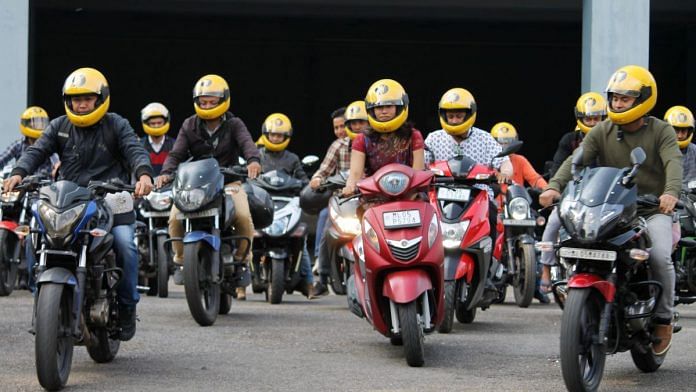Shared Mobility’ is a term that you must have heard of a lot, or the term ‘app-based cab aggregator’. Well, whatever term might have been used, these ideas born through companies such as Uber and their Indian counterparts like Ola, revolutionised the taxi market in India and across the world. In cities like Delhi, where the very concept of hailing a taxi on the road was an alien one, these services became really convenient, especially if you were spending an evening out. The concept is quite different in India compared to most other parts of the world, as private vehicles were never allowed to register on these apps. In a way, defeating the very concept of shared mobility. But that’s a story for another day.
Uber and Ola also took a significant hit following the pandemic but like the economy, these ride-hailing services too have come back to the growth cycle. Both the cab-aggregators have branched out to autorickshaws. Uber and a few other startups have also gone after two-wheelers. If you have travelled to Bangkok, Jakarta or Lagos, two-wheeler ‘taxis’ (bike-taxis) are extremely popular there for obvious reasons. These are all gridlocked cities, taxis are expensive and bike-taxis can weave between cars and get to your destination somehow.
They are cheap. And unlike an auto-rickshaw or an unsafe e-rickshaw, you do not need to share them. If you have been to HUDA City-Centre Metro Station in Gurugram during rush hour, you will see hundreds of two-wheelers plying for either Rapido or Uber Moto (the two largest service providers) at stations ferrying passengers 2-3 km distances to their offices, sometimes on the other side of the highway. Helmet hygiene issues aside, which regular riders avoid by carrying their own headgear, such service makes sense because last-mile public transport connectivity is woefully lacking in every major Indian city.
So why are certain state governments such as Delhi and Karnataka against these services?
In Bengaluru, autorickshaw drivers are up in arms and have gone on strike to protest against bike-taxis. In Delhi as well, both autorickshaw and e-rickshaw drivers are chafing against bike-taxis. And Delhi government wants all bike-taxis to be electric. The latter case, though ostensibly fair, involves a massive expenditure, because lightweight electric two-wheelers while perfectly fine for Swiggy and Zomato deliveries are suitable for carrying a pillion rider for short distances only. Plus a huge fleet of existing two-wheelers cannot monetise themselves.
Sure, the idea to shift toward zero-emissions is a good one and must be pursued, but possibly over a period of two-three years. Also, the economics of going green help because electric vehicles are far cheaper to run, which is why food deliveries are on e-scooters very often. But unless a large operator, such as Blu-Smart, which has a fleet of electric four-wheeler taxis in Delhi, gets involved in the bike-taxi space, the massive up-front costs of electric vehicles will preclude small entrepreneurs from this space.
As for autorickshaw drivers, most of them were desperately unhappy when the Metro lines started in Delhi. Auto drivers in Mumbai too are ruing the Metro. They protested when Ola and Uber started up, and now they think bike-taxis will ‘steal’ their customers. In Karnataka, political considerations could lead to a government ban, but the users of bike-taxis can’t afford the fares of autorickshaws daily, which could be 4-5 times that of a bike-taxi. There are valid arguments to be made about how some riders will drive as well as about women’s safety, but such arguments are also applicable to other modes of transport. After the 2014 Delhi rape case, Uber and its then Chief Executive Travis Kalanick did not cover themselves in glory. But do not throw the baby out with the bathwater.
Also read: Hyundai in talks to buy GM’s Talegaon plant but your Creta, Venue isn’t coming anytime soon
We can have massive discussions about public transport and mobility in India, but we must remember that cars are owned by a small sliver of society.
Advocating for a future urban transport policy dominated by cars or any form of personal transport, even two-wheelers, is not in India’s favour. Indian cities are already choked and additional public transport and shared mobility will work toward reducing India’s energy requirements as well. We need as much shared mobility as possible, whether it is a limousine service or a bike-taxi. Instead of looking to ban them or put obstacles in their path, city and state governments have to look at how to regulate them, making them safe and reliable.
@kushanmitra is an automotive journalist based in New Delhi. Views are personal.
(Edited by Anurag Chaubey)






